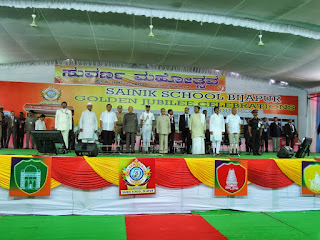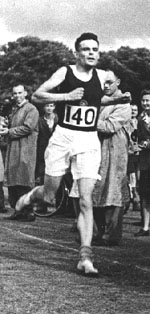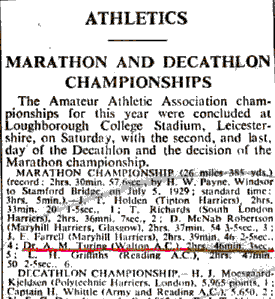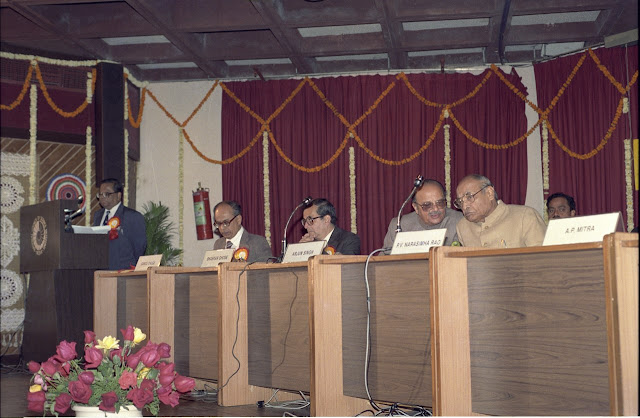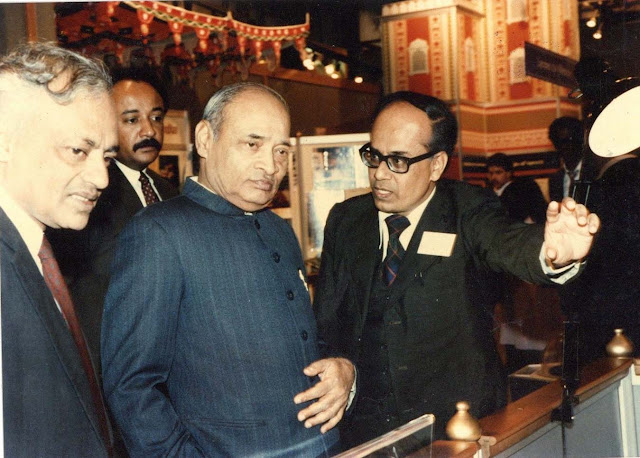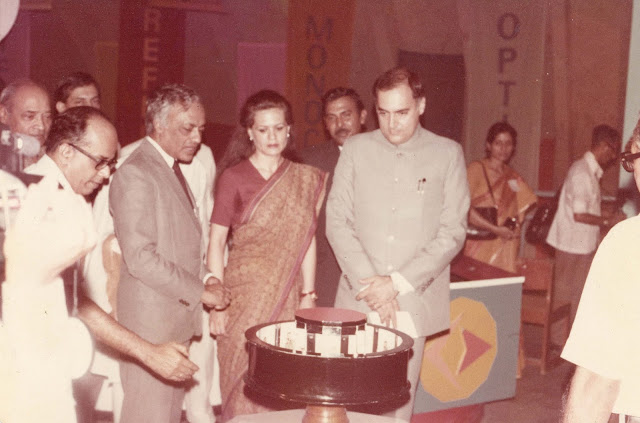Centenary Tribute to Prof Satish Dhawan: The man who steered ISRO into the space trajectory.
Image Credits : ISRO and Wiki Commons.
The years 2019 and 2020 are special to Indian Space Research Organisation (ISRO), an institution which has entered the hearts and minds of all Indians. These two years - 2019 and 2020, mark the birth centenary years of the founder of Indian Space program - ISRO, Dr. Vikram Sarabhai and the man who steered and successfully placed the Indian Space program on the right space trajectory - Prof. Satish Dhawan respectively. Prof Satish Dhawan was the key architect who headed ISRO during those early testing and difficult times, which ISRO had to endear, post the sudden and untimely death of its founder, Dr. Sarabhai, on 31st December 1971. Although the foundational seeds for ISRO were sown by Dr. Vikram Sarabhai, it is a matter of fact that the man who is mandatorily to be credited for the current success of ISRO must be Prof. Satish Dhawan, the founding architect of ISRO who succeeded Dr. Sarabhai and steered ISRO to the modern times, where success and ISRO have become quite synonymous. The nation has paid a year long centenary tribute to Dr Vikram Sarabhai, the visionary of Indian Space, however we must not forget that it was Prof Satish Dhawan who lent substance to Dr Sarabhai’s vision and built the Indian Space Research Organisation (ISRO) brick by brick. Today ISRO is rightfully known as an institution of international excellence and scientists from ISRO can rub shoulders with their counterparts in NASA and other reputed space agencies across the world. This day - 25th September, 2020, marks the birth centenary of Prof Satish Dhawan, who was born on this day in Srinagar in 1920 and as ISRO celebrates his birth centenary we as a nation must join them and raise up in reverence to this national hero of ours.
ISRO, in a befitting tribute, is commemorating the birth centenary of Prof Dhawan by organising a centennial program in his memory, which was beamed live on You Tube this afternoon. The event started with the garlanding of the portrait of Prof Dhawan at the ISRO headquarters by the dignitaries led by ISRO Chairman, Dr. Sivan. Honorable Prime Minister of India shared his message in honour of Prof Dhawan and this message was read by the Chairman ISRO. Other distinguished guests who joined in commemoration of this event and shared their valuable thought included, Dr. Kasturi Rangan, Prof Roddam Narasimh, A S Kiran Kumar, and several other dignitaries including the beloved daughter of Prof Satish Dhawan – Dr. Jyotsna Dhawan.
The best way to begin a tribute to the legendary Satish Dhawan is to recall what the former President of India – Peoples President – Dr. Abdul Kalam and Prof Roddam Narasimh had to say about their ‘Guru’ Prof Satish Dhawan with whom they worked very closely. Dr Kalam worked very closely with Prof Dhawan during his association with ISRO. They said “Professor Dhawan in his professional career has been engineer, teacher, research scientist, technologist, manager, leader and adviser — often all at the same time! His great human qualities, combining intense personal charm with a deep commitment to social values and an extraordinary objectivity in management, have led several generations of students, colleagues and administrators to efforts that they would otherwise not have taken.” In his book “The Wings of Fire” Dr. Kalam has paid flowing tributes to Prof. Dhawan and has quoted several anecdotal references of Prof Dhawan’s par excellence leadership and humane qualities. Coming from the Sainik School background where we were taught that for being a successful officer and a leader, who must command respect and not demand, “the responsibilities must go from top to bottom and benefits from bottom to top”. Prof Satish Dhawan was an embodiment of this tenet. He stands out in these qualities and therefore it is no wonder that scientists across a broad spectrum, who worked with Satish Dhawan, vouch that Prof Dhawan was a staunch votary and a practitioner of this exemplary leadership qualities. Dr. Kalam, who was the project in charge of the SLV 3 project, which failed in its maiden attempt in August 1979, talks about how the failure and its consequences were directly handled by Prof Dhawan who shielded Dr. Kalam from the preying eyes of the journalists who had assembled to share their pound of flesh by targeting ISRO and Dr Kalam for this failure. Prof Dhawan owned up complete responsibility of the failure and took all those hard and tough questions and brickbats from the media. But then when the SLV 3 was successfully launched immediately thereafter in early 1980, here was Prof Dhawan who ensured that all that glory of success and media highlight on the success of the SLV launch went to Dr. Kalam and he preferred to lie low. Such was his exemplary leadership qualities, which shaped and sculpted the very culture of ISRO.
Similarly, Dr. Kalam quotes other anecdotal reference of Prof Dhavan’s benevolence and true leadership qualities. In one such incident, Dr Kalam says that he was again the beneficiary of Prof Dhawan’s exemplary benevolent leadership quality. He states that he had to attend a mandated meeting in Delhi with Prof Dhawan and others from the Planning Commission, for presenting a roadmap of ISRO and getting it approved. Unfortunately for Kalam, this important and unavoidable meeting coincided with the marriage of his niece. Prof Dhawan on learning why Kalam was quite stressed even after the successful meeting, immediately made arrangements for Kalam to fly from Delhi to Chennai by Indian Airlines and from Chennai to the venue of his niece’s marriage by a special helicopter, which Prof Dhawan had arranged through his contacts in defense. Dr Kalam could make it in time for the marriage of his niece courtesy Prof Dhawan. In another instance, Dr Kalam recalls that the entire team of scientists in ISRO were so very committed to their works, courtesy the infectious work and commitment ethics of their leader Prof Dhawan that almost always most of scientists forgot their commitment to their family, while working on their committed projects. Dr Kalam narrates an incident when Prof Dhawan arranged a car and a person to go to the home of a scientist who had forgotten his family commitment of taking his family on a outing on the birthday of their son. Unfortunately the scientist got so involved with his works that he forgot his sons birthday and his commitment to take him out for a dinner. Prof Dhawan knew of this but did not want to disturb the scientist who was completely engrossed in his works. He therefore preferred to send a car and a person to the scientist home for fulfilling scientists commitment to his family. The family was told that since the scientist was involved in an unavoidable work he has sent the car and the person to take them out for dinner. Interestingly the scientist knew nothing of this and when he was returning home from his office, he remembered his promise, which he thought he had failed to meet and was so very worried. Lo and behold on reaching home, the family thanked him for fulfilling his commitment even when he was so very busy, much to the embarrassment and delight of the scientist. Such was the humane leadership qualities that Prof Dhawan excelled in and therefore it is no wonder that ISRO has inherited this culture and continues to excel in what it does.
Prof. Satish Dhawan was born on 25 September, 1920 in Srinagar to the distinguished parents and his father was a respected Judge, who worked in Lahore in undivided India. Prof Dhawan has an interesting mix of education, which cuts across different disciplines and is a novel mix of sciences, arts, and engineering. Prof Satish Dhawan graduated with a bachelors degree in science in Physics and mathematics from the University of the Punjab in Lahore, (now in Pakistan). He then completed a bachelor's degree in Mechanical Engineering and followed it up with a Master of Arts in English Literature. He then went abroad for pursuing his Master of Science in aerospace engineering, which he completed from the University of Minnesota. He then obtained an Aeronautical Engineering Degree from the famous Caltech - California Institute of Technology, US, which was followed by a double PhD. On completing his doctorate, Satish Dhawan returned back to India in 1951, and joined the Indian Institute of Science (IISc) in Bangalore as a senior scientific officer. His commitment and passion helped him climb up the ladder and pretty soon he became the Dean and head of the department of Aeronautical Engineering at IISC. Under his stewardship, the aeronautical engineering department quickly became the epicenter of experimental fluid dynamics research in India. His achievements in the aeronautical engineering department helped him with a very sharp raise and by 1962, Prof Dhawan became the Director of IISc. He was the youngest person ever to have been appointed to the position of the Director of IISc when he was just 42. This coveted position was previously held by the likes of the great Nobelist Sir C V Raman. Prof Dhawan continued as the institution’s longest-serving director for 19 long years (1962-81) even while he held the additional charge of the Chairman and head of ISRO from 1972 to 1982.
After serving in IISc for nearly two decades (1951-70), Prof Dhawan had taken a sabbatical to Caltech, from where he had completed his double PhD. He was scheduled to spend two years on sabbatical at Caltech during 1971 and 1972 for his committed academic works. However, his plan was short lived. December 31, 1971 was a tragic day for India. The founder and visionary of the Indian Space Programme – Dr Sarabhai died suddenly while holidaying in Trivandrum. Under such compelling circumstances, Prime Minister Indira Gandhi called on Prof Dhawan to return back to India cutting short his sabbatical to take charge of the Indian space program. The circumstances were so very tragic that Dhawan immediately accepted the offer of Mrs. India Gandhi and prematurely ended his sabbatical at Caltech to return back to India. Prof Dhawan, however put two conditions to the PM for his acceptance: that the headquarters of the space program be in Bengaluru and that he be allowed to continue as the Director of IISc. Mrs. Gandhi agreed to both his conditions and Dhawan returned to India in May 1972 to mantle the position of the Chairman of the Indian Space Research Organization (ISRO) and to head the Space Commission as the Secretary to the Government of India in the Department of Space, while also retaining his Directorship at IISc. Prof Satish Dhawan shouldered this additional responsibility of heading ISRO but took no benefits whatsoever from ISRO. He drew a notional salary of Rs 1 for shouldering the responsibility of heading ISRO.
In the early 1970s, India had other social priorities, which among other things included providing ‘Roti, Kapada aur Makan’ to the citizens, the political slogan which had won Mrs Gandhi a major mandate to be elected as the Prime Minister of India. It was also the period when India continued to rely on a scheme called PL 480 under which the Americans sent ship loads of wheat for feeding our countrymen. Therefore, it was quite obvious that during those early years, investment in Indian space program was considered by many as not just a luxury but also a wasteful expenditure. Although Mrs. Indira Gandhi - the PM of India, had personally hand picked Prof Dhawan for the task, yet it was not an easy task to accomplish. There were too many critics who were highly vocal in their criticism of the Indian governments decision to invest in space program. The critics argued that the government had misplaced priorities and that space technology, which was rid with great challenges and failures that are an integral part of Space, is not the right priority for the government to be spending money on. Instead, the critics argued the government must spend on health and education and such other areas. It was under these testing times that Prof Satish Dhawan took charge of the Indian Space program.
One of the first important decision that Prof Dhawan took, after assuming the charge of Indian Space program, was to requisition the services of Dr. Brahm Prakash from the Department of Atomic Energy to head the newly formed Vikram Sarabhai Space Centre (VSSC) at Trivandrum (now Thiruvananthapuram). This was perhaps the best decision, which helped ISRO immensely. Brahm Prakash helped in restructuring the facilities at VSSC into a dynamic structure, which was capable of producing tasked results time and time again. Dhawan worked hand in hand with Brahm Prakash to create the VSSC, which continues to be one of the great technology centres of modern India and has served as the mother institution and has become the birthplace of many subsequent ISRO centres and activities. Interestingly enough Dr APJ Kalam who was working with Aeronautical Development Establishment (ADE), had trained under Prof Satish Dhawan at IISC in designing a hovercraft for the ADE, one of Dr Kalam’s first assignment. Prof Dhawan, however had no connection then with either ISRO or ADE. He had seen the passion and commitment of Dr Kalam when it came to applying himself for the project assigned to him. When Prof Dhawan became the Chairman of ISRO he discussed his plans to requisition the services of Dr Kalam for ISRO, with Brahm Prakash and the duo hand picked A.P.J. Abdul Kalam to lead the project that developed SLV-3, India’s first launch vehicle. They also convinced Prof U.R. Rao to return back to India to head the team that made the country’s first satellite, Aryabhata. When the SLV-3 put a small 40- kg Rohini satellite into orbit in 1980, India truly entered the space age and the major credit for this achievement must go to Prof. Satish Dhawan.
Prof Dhawan was convinced that if the Indian space program is to succeed it needed the continuous patronage of the government. Therefore notwithstanding major opposition from several of his contemporaries and colleagues, he worked towards bringing ISRO under the Government of India and thus created the Department of Space. Knowing well the drawbacks of the government departments, Prof Dhawan had to create a different structure for the functioning of the newly constituted Department of Space. He therefore commissioned a new body called the Space Commission, which enjoyed a separate book of financial powers and this body had a direct link to the Prime Minister. Thus he successfully created specific mechanisms, which could help the newly developed department to address the challenges that ISRO faced. He also ensured that there will be one combined office, which shouldered the responsibility of the offices of Chairman of ISRO, Chairman of the Space Commission and Secretary for the Department of Space and that there will be one person who will head this office, which ensured seamless integration between conceptualization and funding of programmes with delivery of technologies, launchers, satellites and applications. This major policy decision, which he not only conceptualised but also successfully implemented continues to help ISRO in achieving the stiffest challenges even today. His decision to locate the ISRO headquarters away from the national capital, a condition which he had placed before Mrs. Gandhi, has also benefitted ISRO. Although one of the reasons for Prof Satish Dhawan to position the ISRO headquarters in Bangalore was guided by his passion to be associated with IISc, but there were other reasons too, which made him chose Bangalore. These reasons included the Hindustan Aeronautical Limited HAL and National Aeronautical Laboratory, which were in Bangalore. Prof Dhawan knew that both these institutions will be of immense benefit for ISRO. Prof Dhawan hired staff for ISRO Headquarters, who were young, bright and dedicated professionals, all of who were hand-picked by Dhawan himself. The continuing success that ISRO is now known for stems from this strong foundation, which Prof Dhawan designed and developed. Even today the robustness of this design is visibly seen and appreciated by all the ISRO chairman’s who have succeeded Prof Dhawan.
Armed with all these foundational edifices, which were developed by Prof Dhawan, ISRO began designing the first Satellite Launch Vehicle – SLV 3, which was indigenously designed and built by ISRO under the leadership of our former President, Dr. APJ Abdul Kalam. As discussed earlier in the essay, the first attempt to launch the SLV 3 failed. The improved version of the SLV the Augmented Satellite Launch Vehicle - the ASLV, built by ISRO, also started on a wrong note with many failures. These early failures did not miss the attention of the Indian media and other intelligentsia who went hammer and tongs and highlighted the ‘misplaced priorities’ of the government and its decision to back the ISRO. The media also invented and coined a very catchy phrase to draw the attention of Indian public to oppose the Indian government to support ISRO. They termed the early launch vehicles of ISRO - the SLV and ASLV experiments, as ‘Sea Loving Vehicles’ and ‘Always Sea Loving Vehicle’, in consideration of the fact that the SLV and the ASLV launch vehicles more often than not failed and ended up in the sea rather than going into the space. It was during those early turbulent years that the grit and determination and the ISRO Culture was incubated and shaped by Prof Satish Dhawan.
Prof. Dhawan was the first to set up the supersonic wind tunnel in India and pioneer research on relaminarization of separated boundary layer flows, three-dimensional boundary layers and trisonic flows. He also carried out pioneering experiments in rural education, remote sensing and satellite communications. His efforts led to operational systems like INSAT- a telecommunications satellite, IRS - the Indian Remote Sensing satellite and the Polar Satellite Launch Vehicle (PSLV), the work horse of ISRO, which has placed India in the league of space faring nations. Most of what ISRO does so well today – the IRS and INSAT satellites with their associated Polar Satellite Launch Vehicle (PSLV) and Geostationary Satellite Launch Vehicle (GSLV) systems — are outcomes of these carefully thought out processes. Prof Dhawan was a great advocate of indigenous development. From the very beginning, he emphasised on the importance of developing indigenous industry and including them in the projects of ISRO. Today, hundreds of industrial units, both in the public and private sectors, manufacture a wide range of space-quality hardware for ISRO to make ISRO ‘Atmanirbhar’.
Today, ISRO receives a national reverence and every Indian is so very appreciative of the achievements of our space scientists, who have made India proud and for this we must credit Prof Satish Dhawan whose exemplary leadership and resilience to stay on course, even under adverse conditions, has made this possible. ISRO now has developed an extraordinary resilience to face any challenge even in the face of a few setbacks here and there, thanks to the early culture and outlook that was shaped by Prof Dhawan. It is therefore befitting that following his death in Jan 2002, the Indian satellite launch centre at Sriharikota, Andhra Pradesh, has been renamed as the Prof. Satish Dhawan Space Centre - SHAR.
Courtesy the ISRO culture, which Prof Dhawan helped in establishing, ISRO today is able to achieve some of the most eye catching successful space programs that have caught the attention, not only of all Indians but also the global community including space experts in NASA and the European Space Agency. These space missions include among others ; Chandrayaan 1 and 2 and the Mars Orbiter Mission, which India could successfully launch in its maiden attempt and that too at frugal cost. These space missions and so also several other successful missions of ISRO have not only inspired many young people and given the nation a sense of justifiable pride in the achievements of the Indian space programme, but it has also provided the nation its rightful place in the international space arena. Amidst the euphoria surrounding such glamorous space successes and events, on this special day, which happens to be the birth centenary of Prof Satish Dhawan, it is our rightful duty that we remember the gentle yet a colossus leader who made all this possible - Prof Satish Dhawan.
It must also not be forgotten that all through this period, when Prof Satish Dhawan was heading and steering the ISRO, he also served as the Director of the Indian Institute of Science, the position he held from 1962 to 1981. Dhawan loved teaching and research. Perhaps it was his love for teaching that compelled him to pose a condition to the Honourable Prime Minister that he will continue to be associated with IISc and that ISRO must be headquartered in Bangalore and not Delhi, which could have been a natural choice. Dhawan, notwithstanding his immense and stellar contributions to ISRO, always believed that his most productive years were spent at the Indian Institute of Science (IISc), Bangalore, which always remained his first and greatest love. Dhawan during his nearly two decades of service as the director IISc, transformed the institution and he also managed to bring some fresh faces to IISc prominent among them include the great Prof GN Ramachandran and Prof CNR Rao. He established several new areas of multidisciplinary research at IISc.
Prof Dhawan had an extraordinary interest in nature and in particular he admired the flights of the birds. This passion for observing and falling in love with bird flights led him to undertake a comprehensive study the ‘flight of birds’. He was often found roaming around the Pulicat Lake, Nelapetu and other bird sanctuaries near ISRO’s Sriharikota Range, which were frequented by lot many birds. His hobby or a casual interest in observing birds flight turned into a professional study, which resulted in the publication of a classic monograph called ’Bird Flight’. In the seventy plus pages article, which he published in 1991, Dhawan writes humbly in his preface : “I lay little claim to originality and acknowledge my debt to the many distinguished researchers on animal flight who have made the subject a new branch of science. I am no less indebted to the birds...”. Many of the drawings of birds that appear in this monograph were sketched by Dhawan himself.
The handsome and elegant Prof Dhawan had an extraordinary impact on all those who he interacted with, which he never seemed to realise. His impact was so very profound that most of them ended up doing whatever he wanted them to do. Prof Dhawan has received innumerable awards and accolades and primary among them include the Padma Bhushan and Padma Vibhushan awards from the Government of India, fellowships of all the Academies of Sciences in India and several from outside the country. He is also the recipient of the Indira Gandhi Award for National Integration and the distinguished alumnus award from the Indian Institute of Science and Caltech. Prof. Dhawan after serving the nation for more than eight decades left for his heavenly abode on 3rd January 2002. The Indian Academy of Sciences, of which he served as the President, in one of its publications ‘Resonance’, has carried a befitting tribute to Prof Dhawan in its October 2003 issue where stalwarts like Dr Abdul Kalam, Dr Kasturi Rangan, Prof Roddam Narasimha and others have written flowing tributes to Prof Satish Dhawan. Today when the nation is celebrating the birth centenary of Prof Satish Dhawan, which was kick started by ISRO this afternoon, it is time for all of us to raise in reverence for this great nation builder, who selflessly and tirelessly worked towards our nation building.
May you continue to rest in peace in the heavenly abode which is now home to you Prof Dhawan and may you continue to inspire generation of youngsters and may several of them tread the path which you have shown.
















